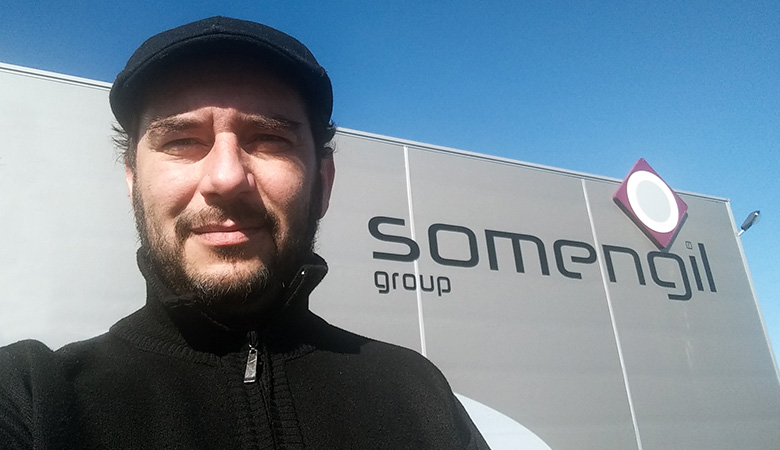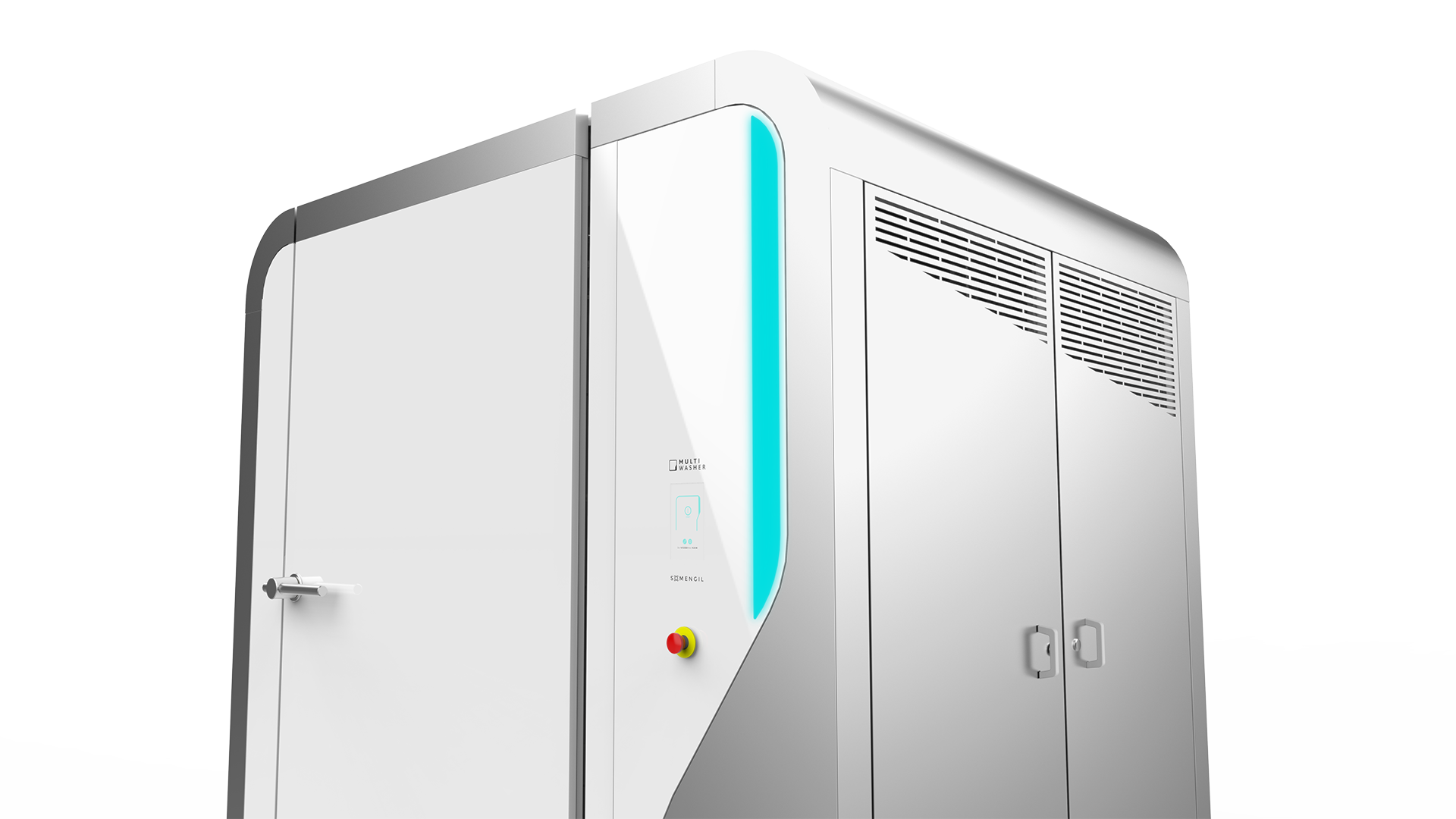Gestão / Artigos
“The machine that changed the world is over 160 years old!”
We spoke with José Camarinha, Export Manager at Somengil, about the importance of the washing machine and how it continues to shape society 160 years after it was presented to the world.

 7 minutos de leitura
7 minutos de leitura
2022-02-10 14:18:22
“It was the year 1850 when a machine changed the world. It all began in the U.S., with front-page honors. Since then, it has grown to reach businesses and homes all over the world. The washing machine is an invention of enormous importance in our way of life, with a rich and interesting history that few really know about. And the latest innovations fill us with enthusiasm for what is yet to come. We are experiencing a period of enormous dynamism in the sector, with new demands and a greater awareness of the impact of washing on the health and well-being of all.”
But it wasn’t always like that.
Necessity is the mother of invention
Today, we take domestic and industrial washing machines as a fundamental piece of equipment for everyday life. In both homes and businesses, from catering services to hospitals, this equipment saves precious time and contributes to food security.
But in 1850, when the first patent for a washing machine was registered, few would have imagined what was to come. Designed by Joel Houghton, the machine that changed the world had a rudimentary design, like all the innovations at its beginning. For starters, it was made of wood! Water passed through wooden pipes and sprayed the dishes.
Years later, in 1886, Josephine Cochrane made the next significant contribution to the evolution of washing machines. Ahead of her time, she improved the original model and presented a washing machine very similar to what many of us have at home today. This is how the world met the first “modern” machine, with a copper boiler and a wooden wheel. The plates, placed in compartments held together by wires, rotated and were sprayed with soap and water.
By this time, its price, size, and consumption of water meant washing machines were a luxury product, accessible to a select few. But that would change overtime, thanks to the ingenuity and determination of successive generations. A tradition Somengil is proud to continue.
From luxury to indispensable
Over time, virtually every component of the dishwasher has improved, replaced, and optimized. It was the result of tireless determination.
For example, the inventor of the first functional machine, Cochrane, continued to improve its models until the end of her life. She would change a centrifugal pump, or make a slight alteration to the rotary washing system. This level of concern, care and dedication is something that inspires us at Somengil. We know the weight of history, and the heritage we received from the early pioneers, and we work to keep the flame of nonconformism alive .
Cochrane’s innovations were groundbreaking but such an important invention could not be the work of a single person. Several other innovators and engineers worked to create a more efficient dishwasher system using new techniques. This is how water sprays came to be used as an early version of water jets, which are now common in washing machines.
But it was only with the introduction of detergents in the mid-1900s, which replaced the soaps previously used, that it was possible to create an easier, faster, and more efficient washing. The dishwasher had finally reached a wider audience. And businesses too.
The impact on food businesses
Inspired by pioneers such as Joel Houghton and Josephine Cochran, at Somengil we have been developing new standards of innovation and excellence. The result is the MultiWasher, a new concept of washing machine for professional use, in restaurants, hospitals, hotels, factories and warehouses. This equipment makes it possible to wash any type of utensil, work tools, kitchen utensils, medical equipment, trays and transport cars.
Our machines stem from years of iterations and a rigorous process of continuous improvement. These are silent equipments, that consume much less water, energy, and detergent than our competitors. We have introduced an intuitive panel with various pre-recorded washing programs to make the machine easy to use. And we designed an innovative process (the first of its kind in the world!) that allows us to optimize the temperature, speed and duration of each washing cycle depending on the load on the machine.
For companies in the food sector, MultiWasher is especially relevant as it increases efficiency and food safety, while reducing environmental impact. Take Embutidos Ibisma, for example. The Managing Director of this sausage company, Rosa Gomez, is an unconditional fan of MultiWasher and explained in a recent interview the change felt after the installation of the machine. Even in a company accustomed to high levels of quality controls, efficiency standards and public scrutiny, the machine’s impact on productivity was notorious. For Embutidos Ibisma, as for over 2,000 companies in 30 countries that work with us, it is these concrete gains of profitability, safety and sustainability that make all the difference.
MultiWasher, past, present, and future
Next time someone in your company has to wash something by hand, tell him or her how the dishwasher has changed the world. And remember, you could do the same for your company. At Somengil, we keep the past in our minds and we keep our eyes on the future.
We recently launched MultiWasher Healthtech, dedicated to the hospital sector. This innovative equipment achieves high levels of hygiene with higher temperatures, reducing the consumption of detergents that contaminate the internal and external working environment. For the Horeca sector, we remain focused on reducing water, energy and detergent consumption. We’ve been able to use only 1/3 of water per wash cycle compared to a traditional solution, but we want to go even further.
Another area we are currently working on is the reduction in chemicals, whose active agents contaminate the environment and harm the human health. We have already achieved significant improvements, such as a 70% reduction in detergent consumption during each washing cycle. But we know there’s always room to do more and better.
At Somengil, we are building the future every day and with every innovation. We invite everyone who wants to join us to see the difference. Contact our team to schedule a webinar.
Também pode gostar

Gestão / ArtigosArtigos
Resource management: what is it and how to do it right
Learn how efficient resource management can enhance productivity, reduce costs, promote sustainability, and avoid unforeseen hiccups.
Postado em 2024-04-23

Gestão / ArtigosArtigos
DMAIC: what it is, what it is for, and how to use it
Reduce waste, solve problems, and improve processes. Learn about the DMAIC method and find out how to implement it in practice.
Postado em 2023-03-30

Gestão / ArtigosArtigos
Why does strategic planning fail?
What causes even the most innovative companies to fail in strategic planning? These are the key mistakes to avoid and how to get it right.
Postado em 2023-02-02






















 Português
Português English (UK)
English (UK) English (USA)
English (USA) Français
Français Español
Español Deutsch
Deutsch